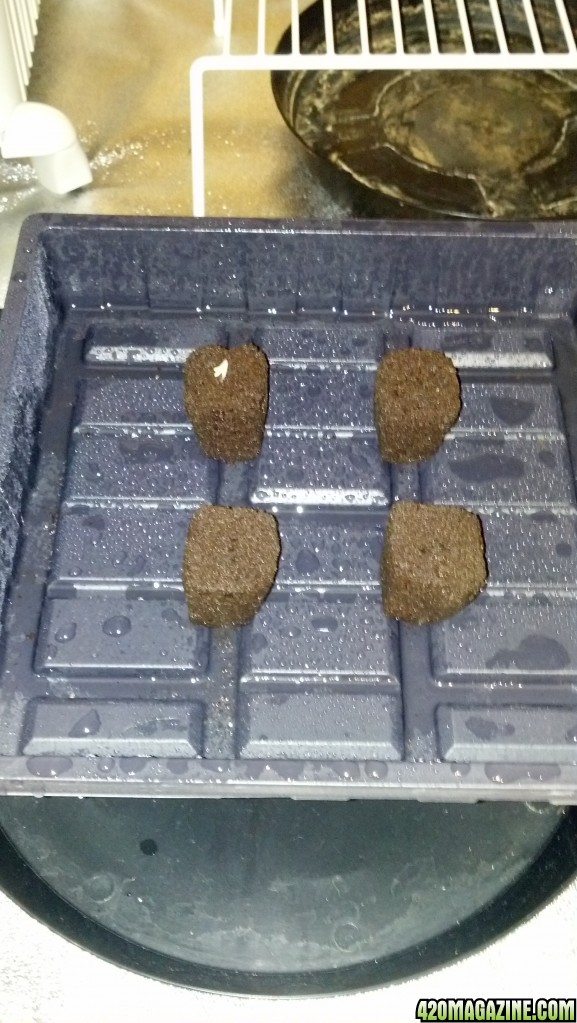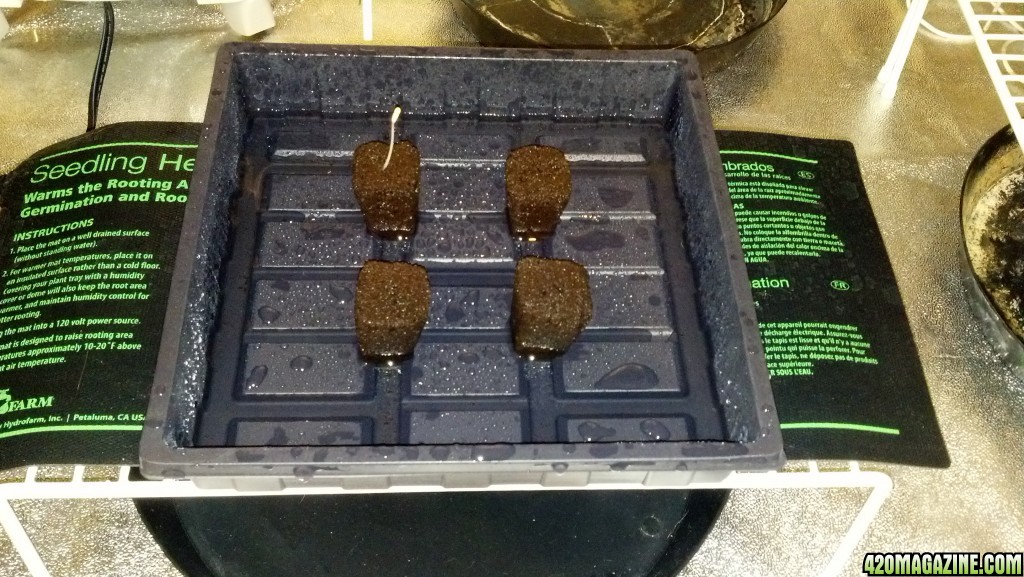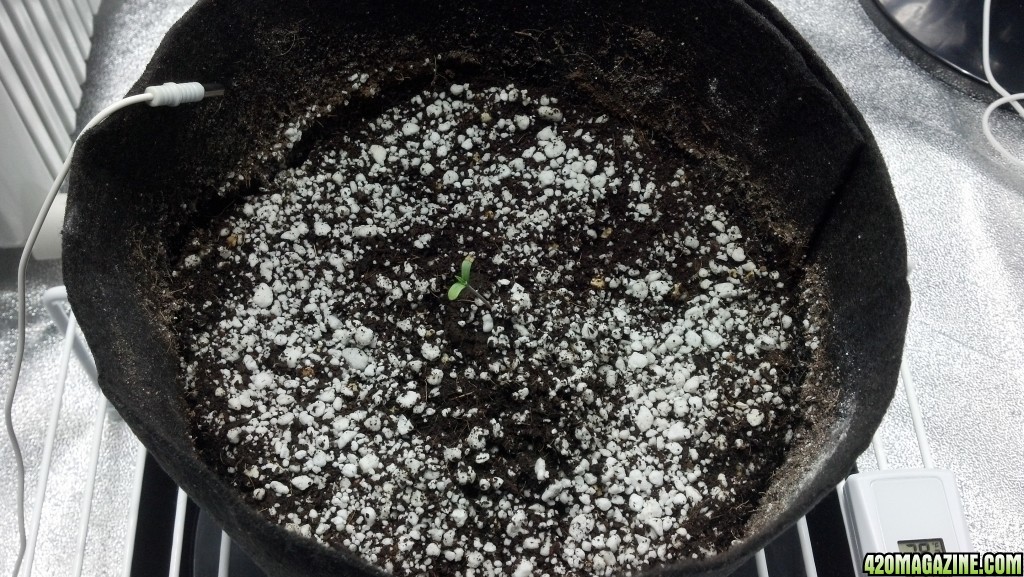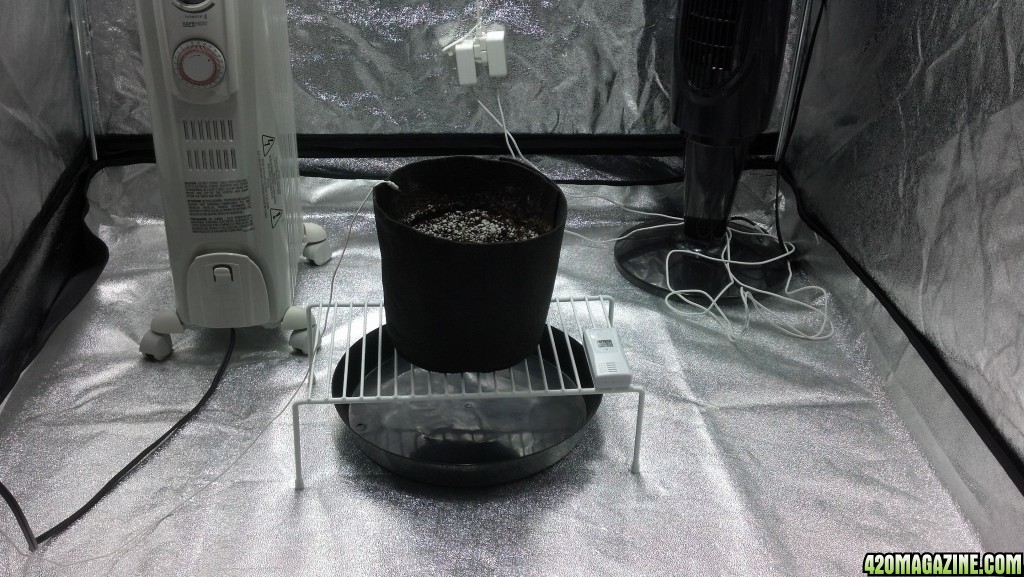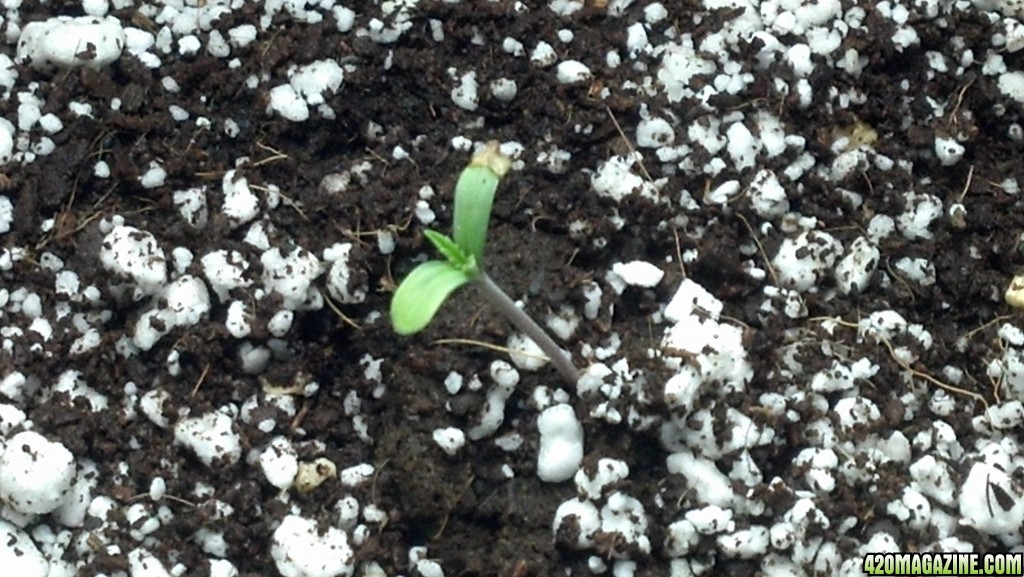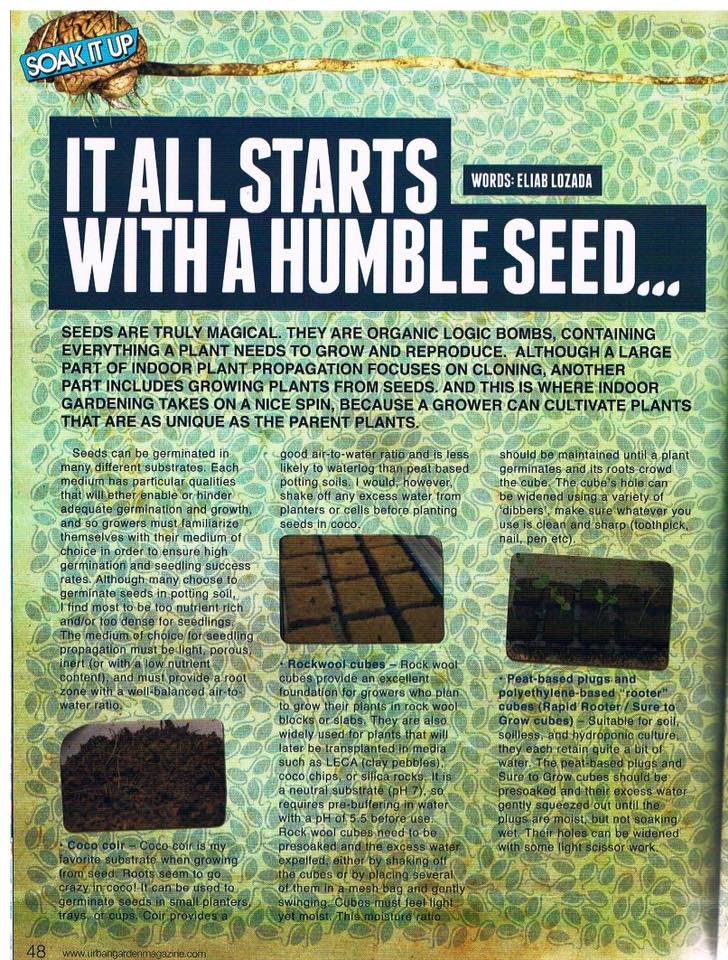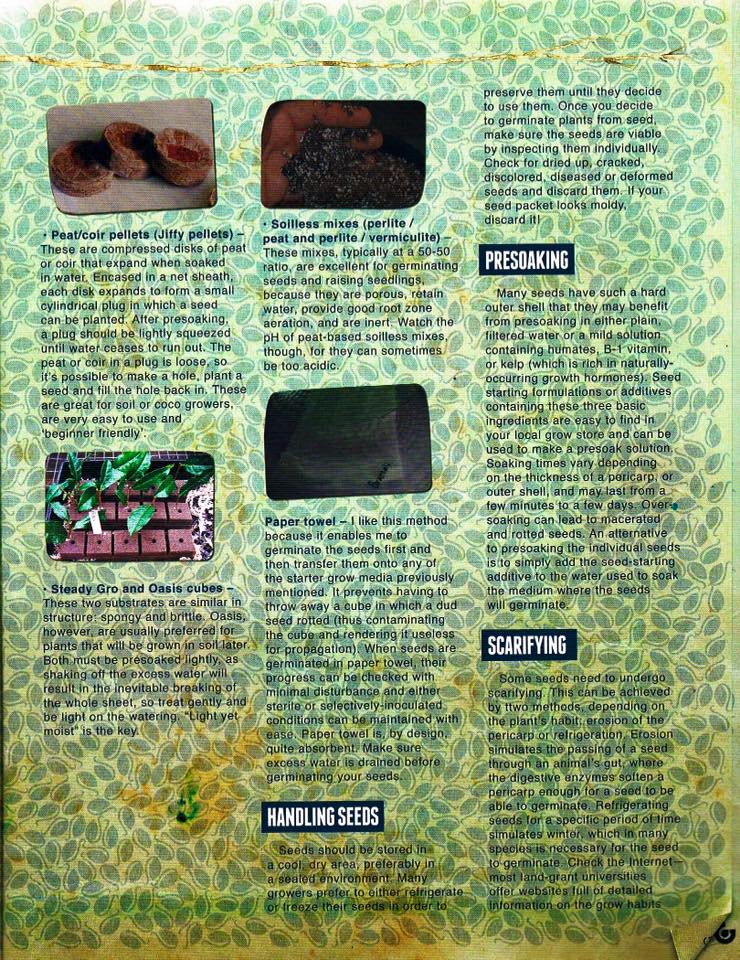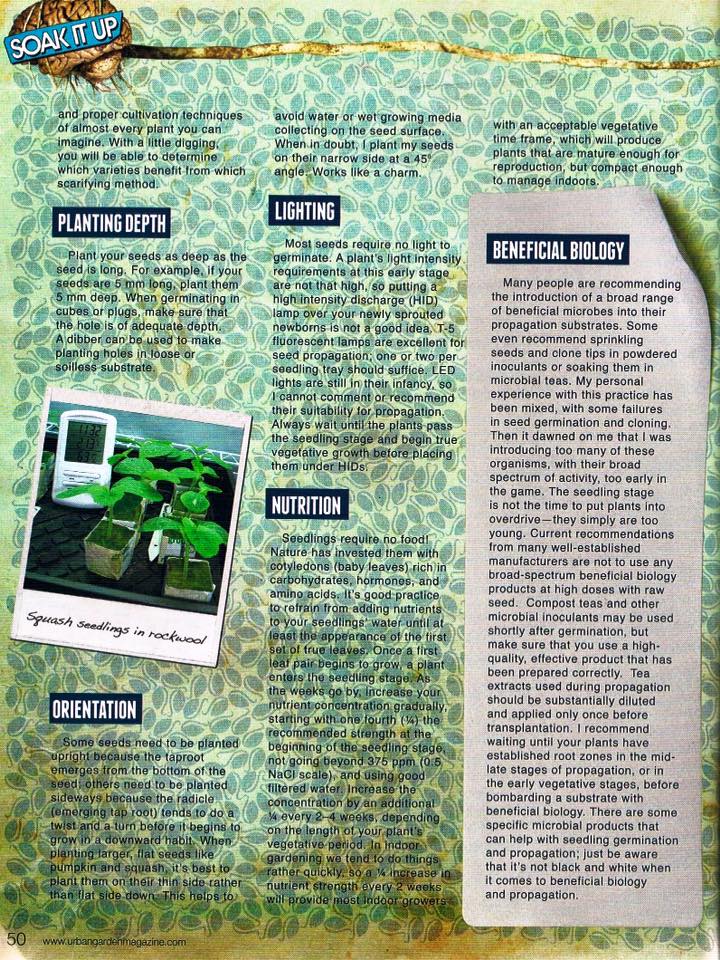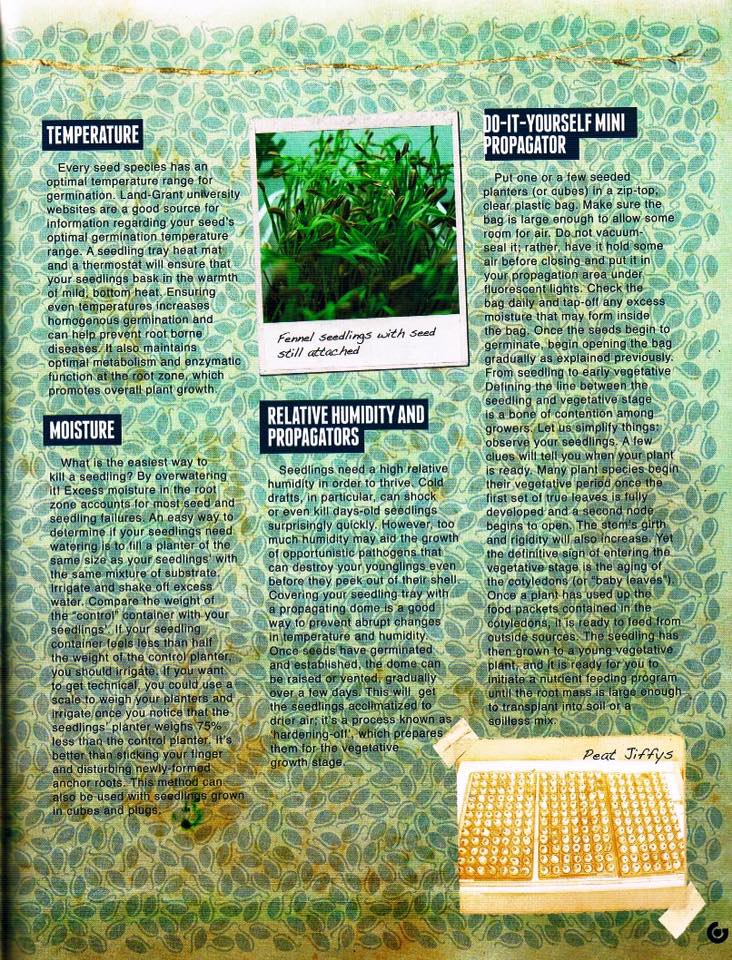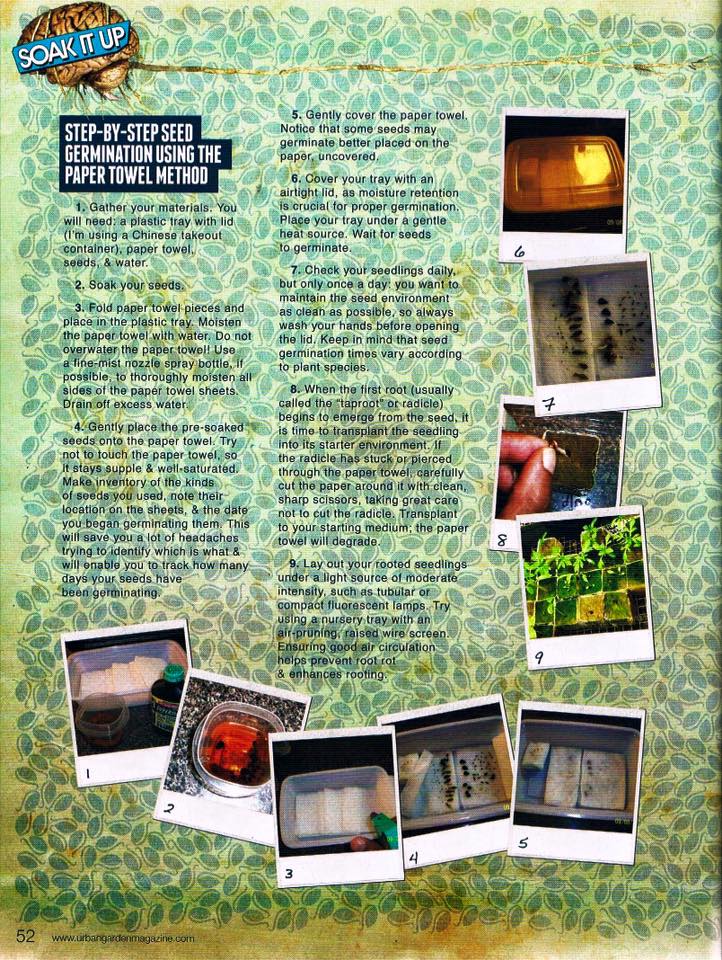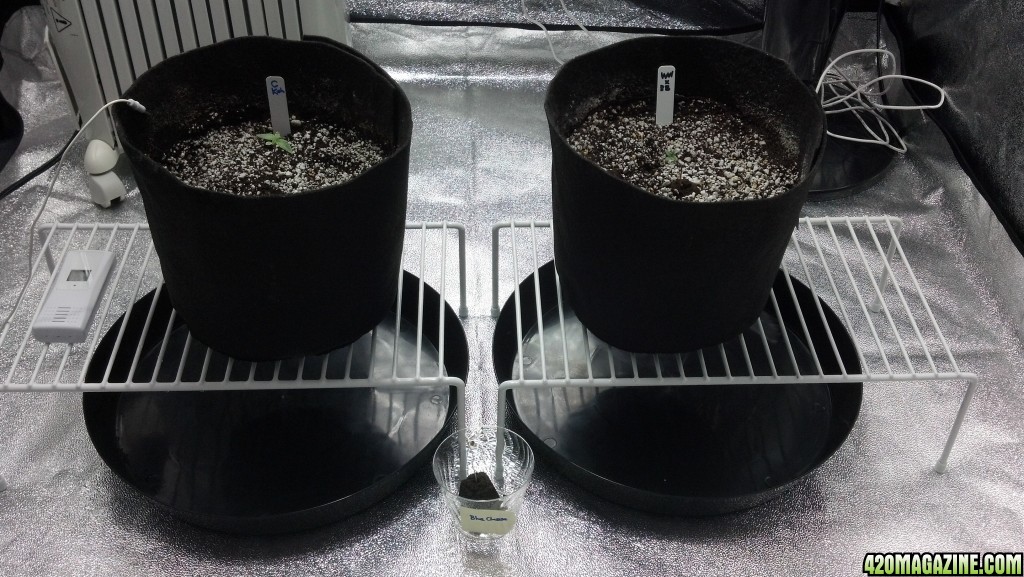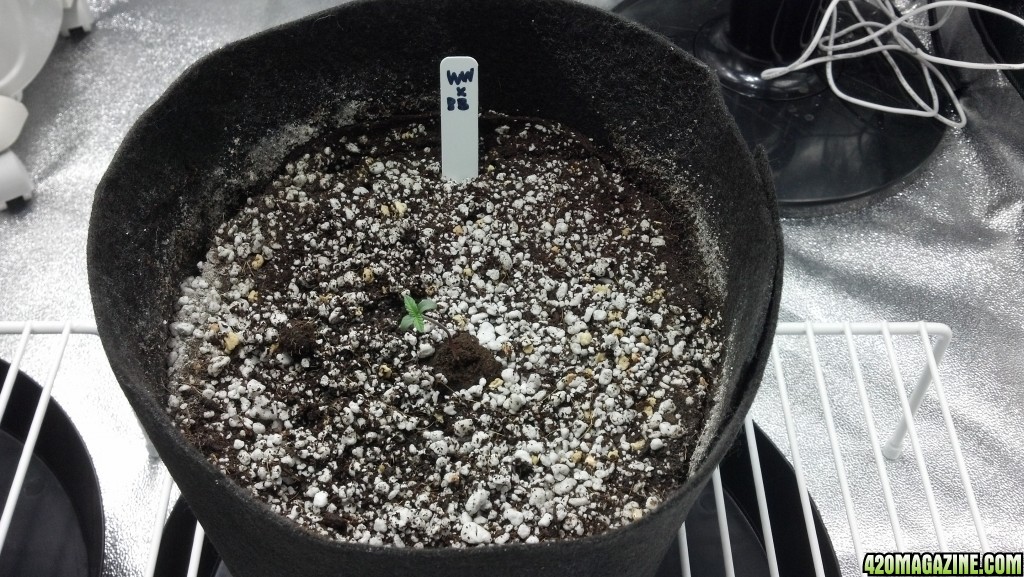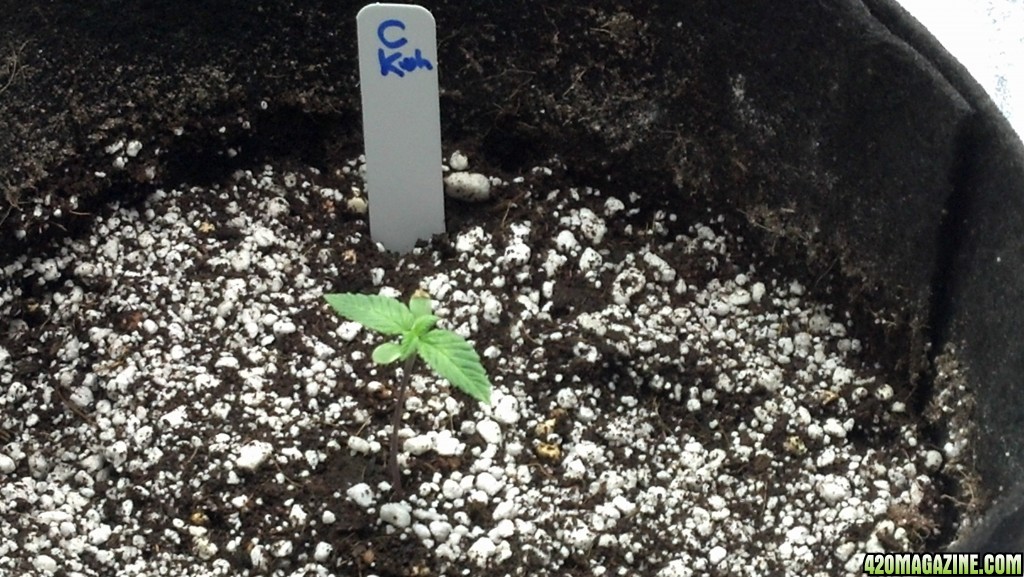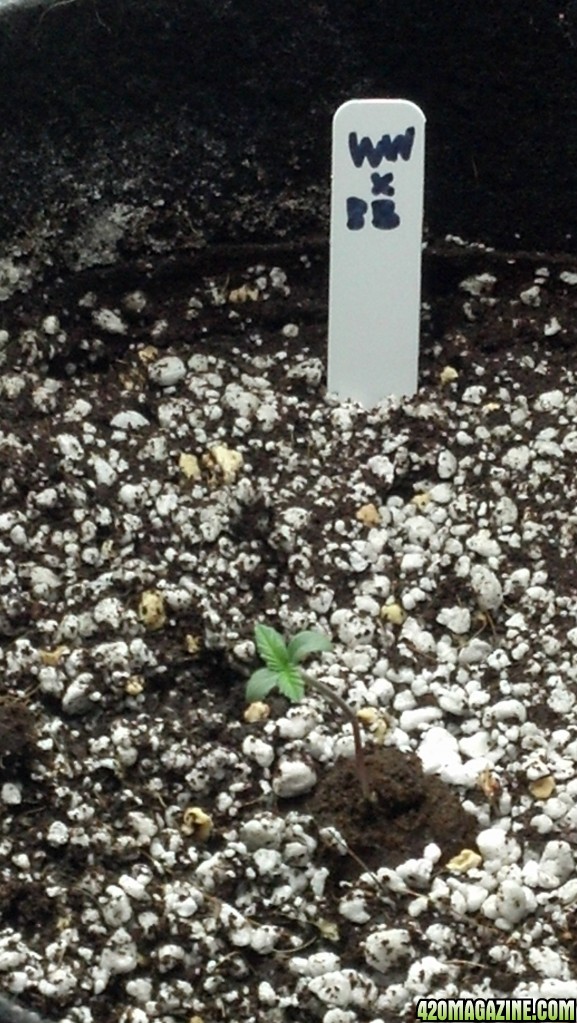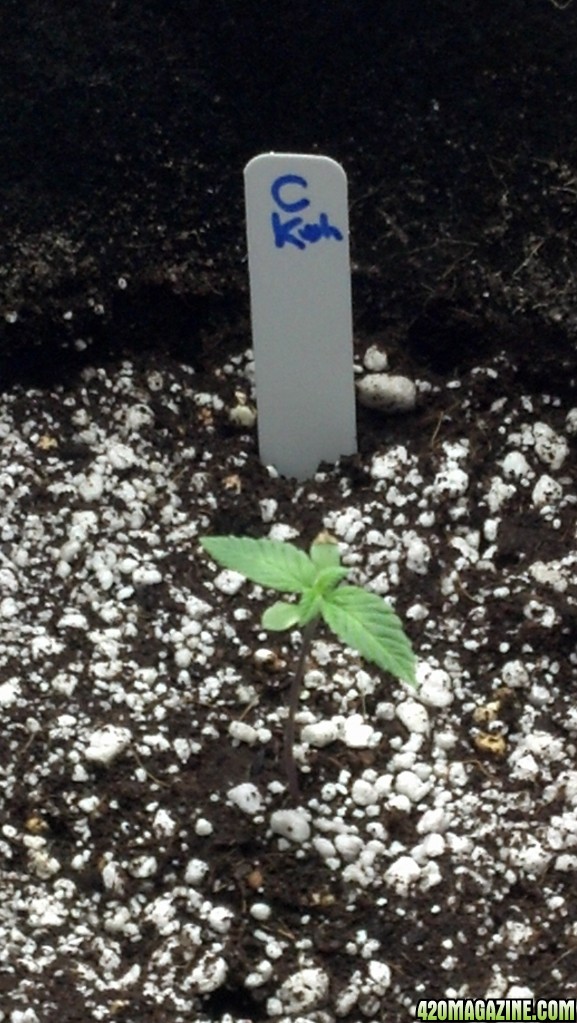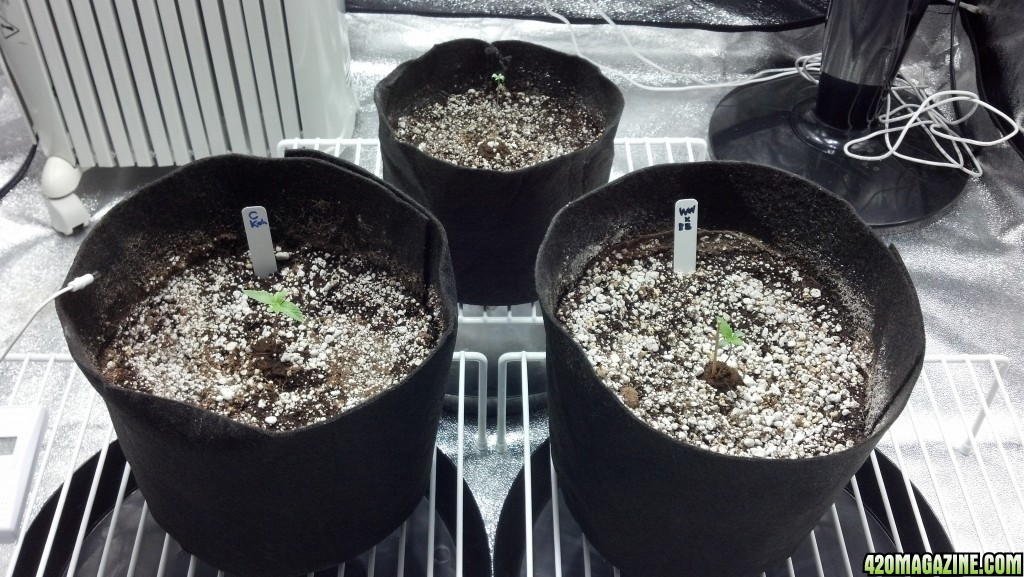snack420
Well-Known Member
Hi all,
Welcome to my 3rd grow journal here at 420magazine.com!
This website has been so inspirational for me and a huge source of valuable growing information. I want to give back to the community what I can by sharing my experiences while I continue learning about the wonderful world of growing cannabis!
I hope you share this journey where I will attempt to grow some really potent Indica-dominant MJ. I'll try to be brief when possible, but usually I have a lot to write about my grows, so there ya go
Here are the details of my botanical voyage, which is planned for April.
What strain is it? Critical Kush from Barney's Farm (2 plants)
Is it Indica, Sativa or Hybrid? What percentages? Indica hybrid; my understanding is about 75% Ind / 25% Sat
Is it in Veg or Flower stage? Will start in April
If in Veg... For how long? Hoping to veg for 6-8 weeks
If in Flower stage... For how long?
Indoor or outdoor? Indoor (4x4 tent)
Soil or Hydro? Coco (Botanicare) with Perlite and some crushed volcanic rocks/ash
Size of light? 600W MH for veg, 600W HPS Hortilux for flower
Is it aircooled? Yes
Temp of Room/cab? current ambient temps between 53-85F (w/o cooling); will use a heater during lights off until
not needed
RH of Room/cab? current ambient RH between 37-52%
PH of media or res? will adjust to 5.8
Any Pests ? expecting fungus gnats and will employ preventative measures (yellow stickies, mosquito dunks, diatomaceous earth)
How often are you watering? probably once daily
Type and strength of ferts used? will use H&G Coco A+B w/Roots Excelurator & Drip Clean
One thing I want to highlight is how this grow will differ from my previous two grows. One thing that seems evident from other journals is that adequate oxygenation of the roots is essential for optimum growth. It apparently all starts with the roots, and this makes a lot of sense to me. So, this time around I'm planning to use smart pots instead of plastic pots. I'm also going to have the smart pots resting on a slotted platform or shelf a few inches above the saucers so that water flows naturally out the bottom and the roots do not sit soaking in drainage water. These two changes should hopefully create a much healthier root system, which I hope in turn will create a more vigourous and productive plant. One thing I am concerned about though is how much water is going to drain out the outer edges of the smart pot. I do wonder if they saucers are large enough to catch all the water or whether I'll find a lot on the tent floor? Anyone have experience with that?
Another notable change I'll be making is with the nutrients. For my first two grows I used General Hydroponics, which seemed to work fairly well. However, some of those nutrients are now two years old and I also wanted to try something that is specifically made for Coco growing and gets great reviews. Both House & Garden (H&G), Advanced Nutrients (AN), Canna, and some others got great reviews, but I opted for H&G.
For lighting, I'm using a 600W MH bulb that I used with the first two grows. I was thinking of getting a new one, but was told it should probably still be fine since it has only been used about 4 months total. For flowering, I'll switch to a Hortilux 600W HPS bulb that has been used only 1-2 months. I'm strongly considering using the Gas Lantern Routine (GLR) during veg and will plan to use a diminishing light schedule during flower starting at 12/12 and winding down to probably 8 on / 15 off over a period of 8 weeks or so. Will be curious to hear from others who have tried GLR.
Finally, this time I'll grow 2 plants instead of 4 last time and 1 the first time (though 2 were planned the first time). I learned from my 4 plant grow last time that since I like to hand water, it was difficult to access the plants in the back of the tent, and a decent harvest from 2 plants should actually yield me plenty of bud for quite some time - at the very least past two other grow cycles. So, I want to try and keep things as simple as possible (KISS principle!) so I can spend time focusing on optimizing conditions for the plants so they are as fruitful as possible. For me, quality is more important than quantity.
The seedlings will start in rapid rooter plugs and I'll plant 3 or 4 and transfer the 2 strongest looking ones into 1g smart pots filled with a mix of about 60% Botanicare Coco, 30% Perlite, and 10% Volcanic rock/ash. After 2-3 weeks I expect I'll want to transplant them into 5g or 7g smart pots. Any suggestions on when and/or how to transplant from one smart pot to another are appreciated! In the meantime, I'll look around for tips.
As far as training techniques go, I'm planning to start some LST early on and top and supercrop a bit as they mature. I'm hoping to create an even manifold of maybe 8 colas so they all are roughly the same distance from the light most of the time.
Any constructive comments or suggestions are greatly welcomed, especially if you have any direct experience with any of the things I mentioned. I will try to post as much as possible, but might be limited to once a week when life gets busy. Looking forward to hearing from some fellow growers.
Peace!
snack420



Welcome to my 3rd grow journal here at 420magazine.com!
This website has been so inspirational for me and a huge source of valuable growing information. I want to give back to the community what I can by sharing my experiences while I continue learning about the wonderful world of growing cannabis!
I hope you share this journey where I will attempt to grow some really potent Indica-dominant MJ. I'll try to be brief when possible, but usually I have a lot to write about my grows, so there ya go

Here are the details of my botanical voyage, which is planned for April.
What strain is it? Critical Kush from Barney's Farm (2 plants)
Is it Indica, Sativa or Hybrid? What percentages? Indica hybrid; my understanding is about 75% Ind / 25% Sat
Is it in Veg or Flower stage? Will start in April
If in Veg... For how long? Hoping to veg for 6-8 weeks
If in Flower stage... For how long?
Indoor or outdoor? Indoor (4x4 tent)
Soil or Hydro? Coco (Botanicare) with Perlite and some crushed volcanic rocks/ash
Size of light? 600W MH for veg, 600W HPS Hortilux for flower
Is it aircooled? Yes
Temp of Room/cab? current ambient temps between 53-85F (w/o cooling); will use a heater during lights off until
not needed
RH of Room/cab? current ambient RH between 37-52%
PH of media or res? will adjust to 5.8
Any Pests ? expecting fungus gnats and will employ preventative measures (yellow stickies, mosquito dunks, diatomaceous earth)
How often are you watering? probably once daily
Type and strength of ferts used? will use H&G Coco A+B w/Roots Excelurator & Drip Clean
One thing I want to highlight is how this grow will differ from my previous two grows. One thing that seems evident from other journals is that adequate oxygenation of the roots is essential for optimum growth. It apparently all starts with the roots, and this makes a lot of sense to me. So, this time around I'm planning to use smart pots instead of plastic pots. I'm also going to have the smart pots resting on a slotted platform or shelf a few inches above the saucers so that water flows naturally out the bottom and the roots do not sit soaking in drainage water. These two changes should hopefully create a much healthier root system, which I hope in turn will create a more vigourous and productive plant. One thing I am concerned about though is how much water is going to drain out the outer edges of the smart pot. I do wonder if they saucers are large enough to catch all the water or whether I'll find a lot on the tent floor? Anyone have experience with that?
Another notable change I'll be making is with the nutrients. For my first two grows I used General Hydroponics, which seemed to work fairly well. However, some of those nutrients are now two years old and I also wanted to try something that is specifically made for Coco growing and gets great reviews. Both House & Garden (H&G), Advanced Nutrients (AN), Canna, and some others got great reviews, but I opted for H&G.
For lighting, I'm using a 600W MH bulb that I used with the first two grows. I was thinking of getting a new one, but was told it should probably still be fine since it has only been used about 4 months total. For flowering, I'll switch to a Hortilux 600W HPS bulb that has been used only 1-2 months. I'm strongly considering using the Gas Lantern Routine (GLR) during veg and will plan to use a diminishing light schedule during flower starting at 12/12 and winding down to probably 8 on / 15 off over a period of 8 weeks or so. Will be curious to hear from others who have tried GLR.
Finally, this time I'll grow 2 plants instead of 4 last time and 1 the first time (though 2 were planned the first time). I learned from my 4 plant grow last time that since I like to hand water, it was difficult to access the plants in the back of the tent, and a decent harvest from 2 plants should actually yield me plenty of bud for quite some time - at the very least past two other grow cycles. So, I want to try and keep things as simple as possible (KISS principle!) so I can spend time focusing on optimizing conditions for the plants so they are as fruitful as possible. For me, quality is more important than quantity.
The seedlings will start in rapid rooter plugs and I'll plant 3 or 4 and transfer the 2 strongest looking ones into 1g smart pots filled with a mix of about 60% Botanicare Coco, 30% Perlite, and 10% Volcanic rock/ash. After 2-3 weeks I expect I'll want to transplant them into 5g or 7g smart pots. Any suggestions on when and/or how to transplant from one smart pot to another are appreciated! In the meantime, I'll look around for tips.
As far as training techniques go, I'm planning to start some LST early on and top and supercrop a bit as they mature. I'm hoping to create an even manifold of maybe 8 colas so they all are roughly the same distance from the light most of the time.
Any constructive comments or suggestions are greatly welcomed, especially if you have any direct experience with any of the things I mentioned. I will try to post as much as possible, but might be limited to once a week when life gets busy. Looking forward to hearing from some fellow growers.
Peace!
snack420






 cheers
cheers


